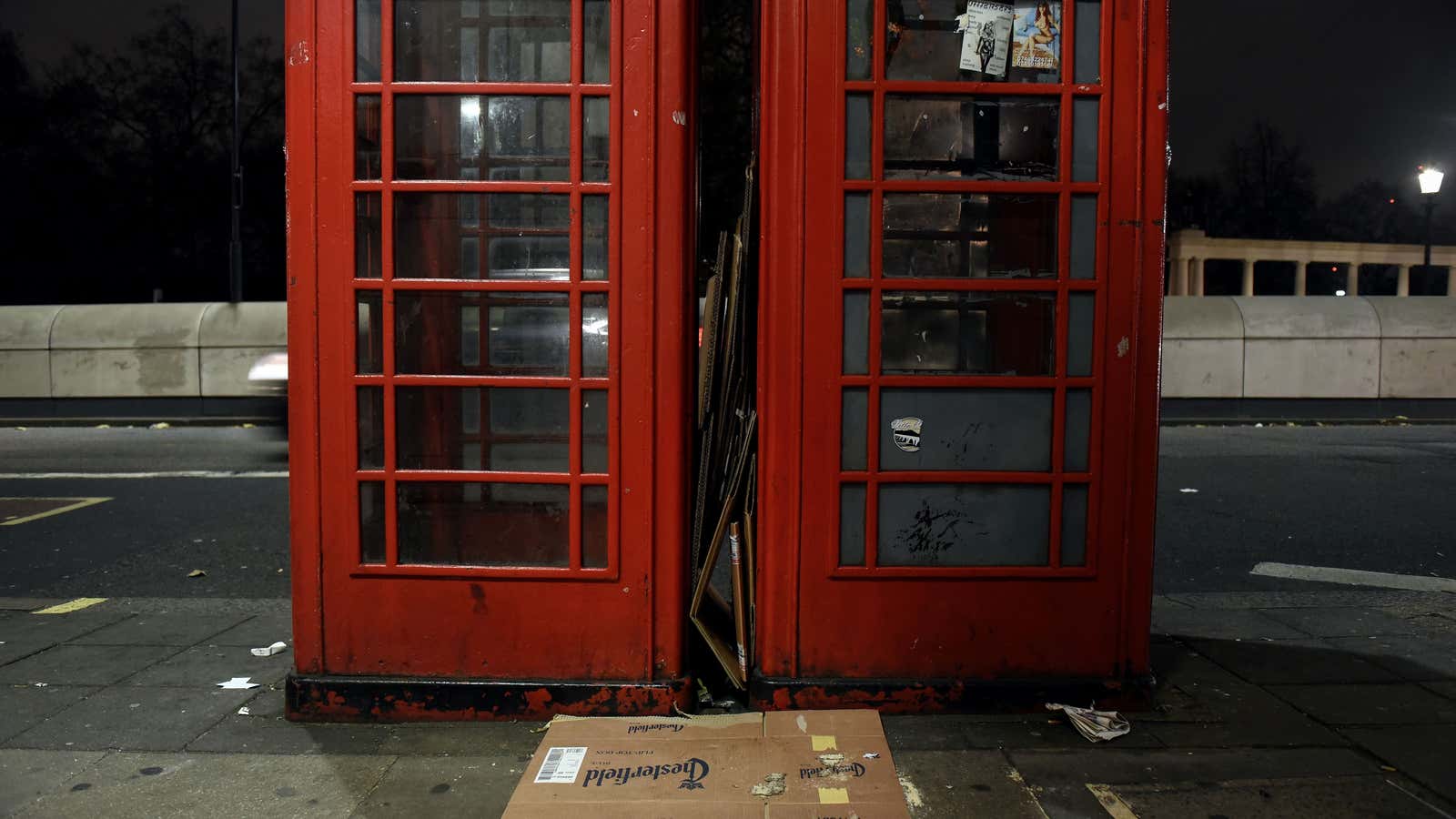The number of homeless children in England has reached levels not seen since the global financial crisis of 2007. And the effects will be felt for decades, experts warn.
More than 123,000 children were in temporary accommodations (pdf) in the first quarter of 2018—compared to 120,540 children during the same quarter in 2017. Under the Housing Act of 1996, local authorities are responsible for placing homeless families waiting for applications for permanent housing to be processed. Activists have blamed the overall increase in homelessness on government welfare cuts and the lack of affordable housing.
The temporary housing itself, while much better than sleeping on the streets, is far from an ideal place for a child to grow up. A report by the Institute for Public Policy Research showed that many placed in temporary accommodations are living in “appalling property conditions,” which are “often coupled with reports of management abuse, theft, fraud, and social conditions that are unfit to live in.”
The impact of child homelessness
Care and support during the earliest years means children are more likely to grow up to be happy, healthy and productive. And the opposite is also true: Experiences like homelessness and living in temporary housing actively harm development and kids’ mental health.
A study conducted in 2006 by the British NGO Shelter found that children living in temporary, overcrowded or otherwise poor housing were twice as likely not to attend school. Only one-fifth of children living in bad housing intended to study full time beyond the age of 16, compared with around a quarter of those living in better conditions.
In a survey conducted by Shelter in 2004, 42% of parents living in temporary accommodation said that their child was “often unhappy or depressed,” with 30% saying their child found it difficult to make or keep friends. Two thirds said their children had problems at school. On average, children in temporary housing had missed 55 days, the equivalent of a quarter of the school year.
Homeless families often face additional challenges, including a lack of access to medical care and nutritious food. Homeless children exhibit more health problems and suffer from chronic illnesses at higher rates. Poor nutrition can lead to iron deficiencies and obesity.
The poisoning effect of stress
Homelessness activates stress-response systems in the body and brain, which can induce “toxic stress” when sustained over time. Toxic stress, in turn, can have damaging effects on learning, behavior, and health. That’s especially the case when kids have no “buffering relationships” with parents or other family members to help protect them.
More than half of all households in temporary housing are headed by one parent, even though households headed by a single parent account for just under a quarter of all families in England. In many cases, homelessness is brought on by a relationship breakdown with a violent partner.
Because poverty is often cyclical, a significant number from an entire generation of kids in England are at risk of falling behind and never recovering–which, as British prime minister Theresa May put it earlier this year, is a “national shame.”
This reporting is part of a series supported by a grant from the Bernard van Leer Foundation. The author’s views are not necessarily those of the Bernard van Leer Foundation.
